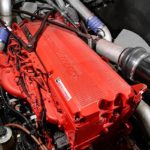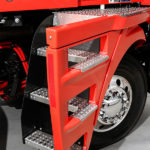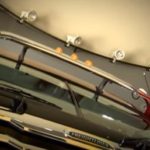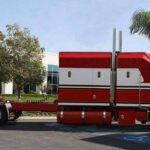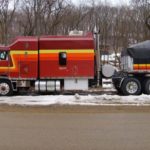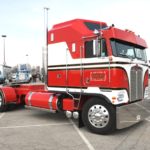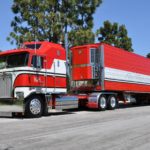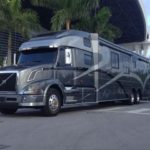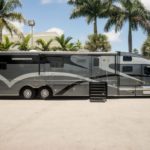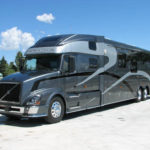Why gene-edited babies is not a real fear (and won’t be for a while)
The following was posted by a redditor named throwawaymymindddddd.
“I would like to put in my 2c since it seemed like it reached no one last time. I’m a research assistant in a prominent lab that utilities CRISPR/Cas9 in experiments and we have published many papers in a wide range of journals including Nature.
“Again I need to say that all this talk is fiction until we can solve the problems associated with gene editing and the technology as a whole. Expanding on my previous comment from another post, CRISPR/Cas9 as well as any other form of gene editing technique including Zinc fingers and recombinase tech would need a huge leap in development to be used clinically.
“To expand, the main problem is specificity. Current technology allows for whole genome sequencing, which you can check my comment history for context. In short, whole genome sequencing is expensive and since science funding has seemed to decline in recent years (See Spain and see how the scientists are struggling over there), it makes it very inefficient to screen possible gene edits within the whole genome. This, coupled with needing an extreme computer with high processing power to actually process the data is not feasible.
“In addition to the previous problem, another problem is time. How long it takes to produce one cell line with a “knocked out protein” (a knock out is a cell line that has a disruption in the DNA that prevents one or more proteins from being produced (For cell lines that have more than one protein knocked out, its usually done in succession)). It can be as fast as one and a half months, and it can also be as slow as 3-4 months or even never! Some genes are fickle like that and are impossible to disrupt.
“People talking about the possibility of editing a live human or a baby are completely out of their mind and are not educated on the topic. For reference, I would introduce CRISPR/Cas9 to approximately 50,000-125,000 individual cells. This number then gets cut down using various methods which include but are not limited to; applying an antibiotic that would kill the cell if it does not have the CRISPR/Cas9 within the cell and/or using Flow Cytometry such as a FACS sort. This cuts down the number into blocks of 96. This is due to the 96 wells present in a 96 well plate lol. ONE SINGULAR CELL is placed in each of the wells. And from this you can get a hit rate of about 10-30 cell lines (Cells that grew from one cell are called a cell line) that grow which takes about 2 to 3 weeks. Those that grow, you then screen for DNA disruption. You can do this via western blotting or sequencing the DNA (which would be a region of about 1000 bases from the available 3 BILLION BASES). Now if none of the cells that grew are positive for what you want, you start again. As you can imagine, going from 125,000 to 1 cell takes a lot of work just for one positive result. This is amplified for a multi-knockout cell line as you would have to do each step for each protein you want disrupted. And people still want to perform CRISPR/Cas9 experiments on humans even with a huge chance of it not working.
“As you can see I haven’t even talked about possibility of introducing another piece of DNA to do the proper “Editing” bit of gene editing. This is a whole different ball park and a whole different game that you play after achieving the previous step. This process is possible due to the repair system in the cell that “protects” the DNA from mutations. This process is also leads into cell arrest but that’s besides the point. So the two types are called Homology directed repair (HDR) and Non-homologous end joining (NHEJ). In conventional circumstances, NHEJ is the method used by the cell. It is also utter crap that doesn’t work 99% of the time LOL. This is good because NHEJ actually allows for the production of knock-outs since when we cut the DNA, it is this repair system that is used to repair that strand of DNA. HDR is utilised by scientists (I think? This is due to my lab utilising a different technology to “rescue” the cells back to health). This technique introduces a strand of DNA (which in gene editing would be the one that we construct and what we want it to be) and uses this strand of DNA to fix the DNA break that we introduced. This is much more effective than NHEJ. Think of NHEJ like a broken jigsaw puzzle and you’re slamming pieces together even if they don’t fit. NHEJ basically grabs whatever it can and hopes for the best.
“It is for these reasons that I believe that this would never happen in our life time commercially. I do think it has a lot of potential for clinical trials though, but only in due time and technological advances.”
… He also commented,
“So CRISPR/Cas9 itself was discovered long ago though it wasnt called CRISPR/Cas9 at the time. Recent for scientists is different from what others would consider recent. For context there are scientists out there still debating about ideas which have been established 20 years into the future!
“I think the overstatements of the dangers of specific scientific research is warranted. At the moment scientists are the only ones aware of the danger while lay people such as Bill Gates still advocate for things that are still fiction. I also think the representatives of the lay people are also an issue. The conclusion that I have come to is that for legislature to be argued between scientists and not between scientists and law makers. An analogy I’ve heard is: Who would you rather have as the captain of the ship you’re on; someone who has been voted captain by the crew, or someone who has been voted captain by the lay people? Obviously you would want the captain voted by the crew right? Someone who has experience in the seas and not one who has been chosen due to their position in power obviously. But with that being said, I do think there are some major flaws in this argument.
“It is true that we can talk about it before it becomes a thing, but I do sincerely believe it to be something past our lifetime unfortunately.
“I’m also very aware about maintaining transparency. The thing is though, I am someone that does not have a PhD, and to get to accumulate the knowledge I have, you would have to complete highschool, do a three year course for a bachelors, do post-graduate courses such as Masters/PhD or do an honours year for Australians and then work as an RA for a year. The knowledge accumulated by my professors or post-docs would be a literal mountain compared to mine. We need to dumb down the ideas as it is not feasible to explain each and every concept involved in a process. Imagine it like building a house. You can say we laid the foundation, we did the roofing, we did the plumbing, it sounds very wishy washy but we know that a house can take weeks or months to build. What I provided in previous comment is the basic structure of how you would go about doing an experiment like that but in reality it would take much more planing and technical work.
“I would actually love that, to have biochemists out in the real world and someone to represent them like how Bill Nye does with other sciences.. This however, is an issue due to the funding received by the professors causing them to be just work horses that pump out research papers. Do the other scientists such as Neil and Bill still do actual science?”
Argosy By Freightliner: It Has Some Amazing Features
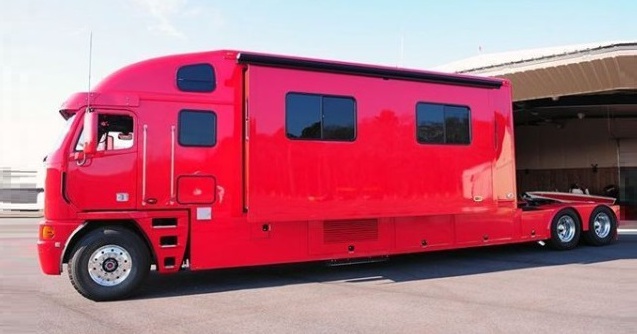
Argosy enthusiasts say that this particular truck might be the “safest on the road today.” Have you checked this modern semi truck out? Despite it being a cabover, which many truckers avoid because they don’t like to be so close to the front of the vehicle, it has a lot of built in safety measures, as well as features added for trucker comfort and use.
It’s made according to Europe’s (where they use a lot more COEs because of their length limits) safety standards — “crashworthiness standards.” The cabin is made to be strong, but is lightweight as well. They come in several roof variances.
Also, despite being a cabover and therefore more or less flat in the front, Freightliner Argosy uses aerodynamic technology. For example, the 24 degree screen.
Ergonomics as well: open the door and an electronic staircase swings out (see picture) so users can step up into the cab. It doesn’t come out 90 degrees. Just few degrees, far enough to comfortably step up.
The cabin floor is completely flat, and the cab (because there are different heights available) can have up to 79 inches of headroom.
It also has air suspended easy-lift seats, fully adjustable steering, anit-glare dash, and matress options up to 51 inches wide.
Freightliner is calling it “the world’s best workplace.” There is a lot of competition probably from semi tractor manufacturers, but those are some pretty good sounding features on the Argosy. What do you think?
This Luxury 5th Wheel Has 4 Slides and a Big Bedroom
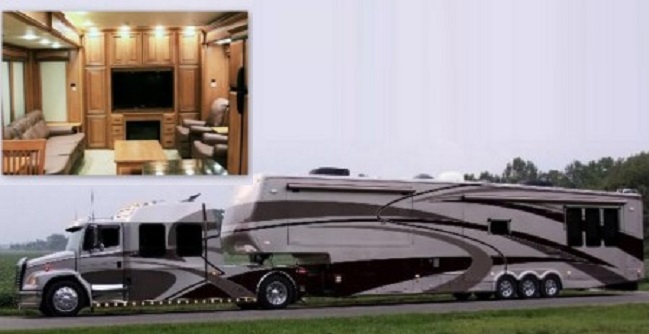
This unit is a 45 foot custom luxury RV with a bedroom and 4 slides.
The floorplan is a 45 foot coach style 5th wheel chassis with maxi storage. The floors, though, are tropic brown with polished porcelian tile and the wood used is spice glazed maple hardwood.
I sort of get the idea the luxury RV makers just set up several vehicles that kind of display the options to buyers. Because you can get any wood, floor, whatever, you want. They have other models on display showing natural walnut hardwood and luxury composite tile flooring, cherry on creyy with “5th Avenue style” fascia and high polished black solid countertops, etc.The exterior paint is custom. Some people pick colors / patterns based on personal preference, some have company or farm colors. The full body pain job is a double clear coat. Continental is a company that’s been building custom products since 1991. Their main focus is full time RV vehicle users and they specialze in premium custom jobs.
Their vehicles therefore are expected to be high performance full time usage luxury rigs. Continental Coaches makes their own chassis and body. And every part of the RV is hand-crafted. They also add automotive trims and sealants to improve performance.
As you can see in the photo above, they use a triple axle for stability and stopping power. They put Goodyear tires on standard and sit under fiberglass fenders. The hydraulic jack system for the unit uses a heavy duty “tube in tube” set of front legs to protect cylinders and add stability. They have an auto-level feature to make setting up easier. Continental Coach is located in Shipshewana, Indiana. We’ve featured several other luxury and custom RV motorhome / trailer companies on here and custom sleeper unit companies, though, too. You can see from the photos the space provided by 4 slides. A slide on each side both open at the same time can double the interior space.
The Aerodyne: The Cabover Model From Kenworth
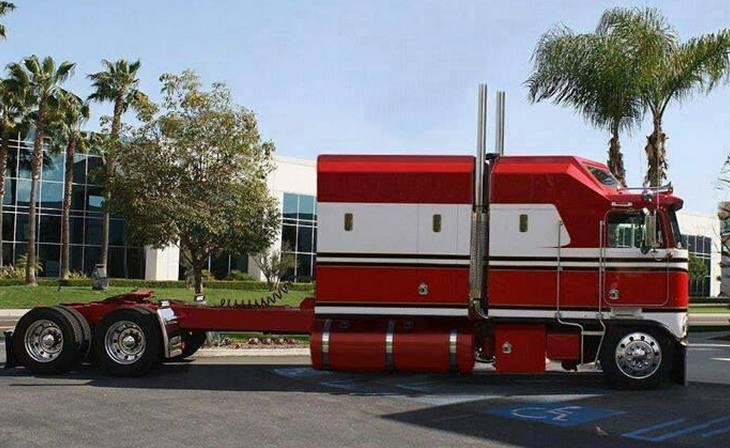
Aerodyne can only come from aerodynamic. Some people have noted that they are seeing less of these K100 trucks. Owners also note that they can sometimes load more than most because their light weight is lighter. But you have to be careful about the front axle weight. Another thing to weigh for those considering buying one of these vintage trailers is that they have lower costs to buy, but their engines are more inefficient.
The reason they’re cheaper than conventionals might be that less people want to run them, so it might be possible to get them cheaper for a newer model with less miles than a conventional at its initial price. But the other thing is that a lot of these have been worn right out and scrapped. They also look very attractive — sometimes luxurious — with big sleeper units attached to them. They become almost like RVs and sell for much more.
One trucker online put the difference between COEs and conventionals in these terms: “The difference between aero of a COE and a conventional (especially if you’re comparing an 80s K100 against a 90s T6 for example) is not cut and dry. Europeans drive cab overs for length not aero reasons, but because they have to drive COEs they have made a number of improvements in aero for them. The old cab overs in the US were never designed to be efficient like modern aero trucks have been.”
Are cabovers in North America sort of being held back in design because they are not popular with drivers and owners? I should say not as popular, because there are a lot of people who are extremely enthusiastic about cabover trucks. Or are cabovers in the States and Canada benefiting from design improvements developed n Europe?
The milage on these is around 6.5 mpg.
One thing a lot of people say about these trucks, though. They look very cool coming down the road, especially when they have those long custom sleepers, whether stock or modifications.
Here’s the cabover in question, as well as a few more which are like the closest things I’ve seen to something like this.
Luxury RV Coach: The Powerhouse
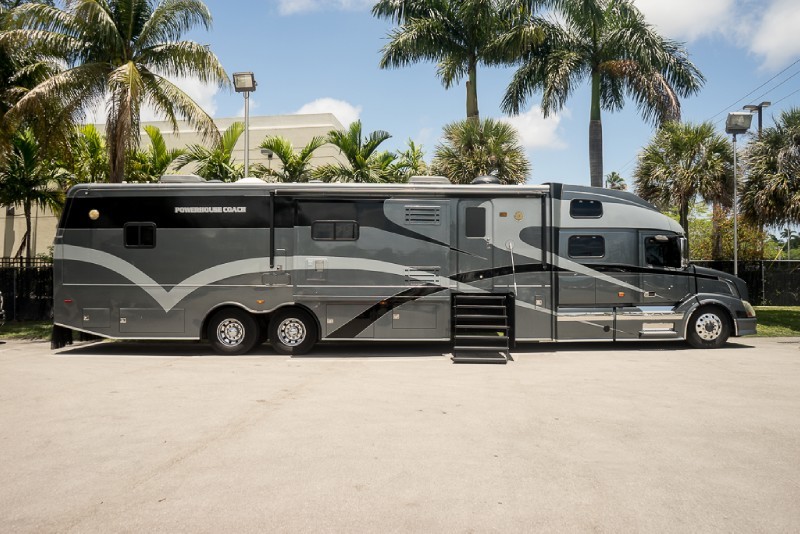
This loaded up luxury coach has Powerhouse’s new lateral drive system.
From bumper to bumper, its 52 feet and has three customized slides.
The truck basis for this luxury RV is a Volvo 780, and of course styled into a luxury boach with air ride on all the axles.
Buyers can choose the body paint and striping (some of this is considered upgrading). All for the affordable-for-some price of upwards of half a million dollars.
Like a lot of Powerhouse RV units, this one has a pearl base clear coat paint job.
And another Powerhouse feature: it has a rear tow lift that’s stored underneith the RV and comes out at a push of a button. RV owners can tow trucks, boats, and others.
The tow unit has a heavy duty 2 1/2 inch class 5 rear receiver hitch.
Then there’s power for all the features of the RV, which is a 12,000 Kabota Diesel Generator SUPER, which is quiet and easy to service, according to Powerhouse Coaches.
All the hook ups, tank fills, drains are organized into one location on the RV.
Powerhouses have multiple TVs, some of the TVs are outside under the awning. Also outside are a fridge, a 35 gallon propane tank that feeds to a BBQ grill.
Freightliner Argosy: They Don’t Make Tractors The Way They Used To!

These huge cabover tractors slash motorhomes are built in Cleveland in the American plant for Freightliner Argosy, which has robotics and the best technology the company has. It was designed in America’s wind-tunnels, too.
The four main objectives Argosy set out to accomplish with this design were these, and they show the focus the tractor company has for owner-operators and truck drivers everywhere: Workplace environment, increased payload, reduced operating costs and driver safety. They have some interesting air control (and debris control) features, including ducts on the front corners to keep splash and debris from shooting up.
They use alumininum for the cabover cabs, so they are strong. It’s not just a frame to shelter the cab from wind.
The trucks not easily buckled, because they’re long (kind of luxury motorhome-length) and riveted with Henrob self-piercing and countersunk rivets. Much stronger than the conventional rivets that pierce the second layer of aluminum.
The cab design is curved to protect the life of the driver in any crash. It’s quite crashworthy, despite being a cabover which most truckers don’t consider particularly crashworthy in general. If you can imagine an impact that forces the walls and things of a cab inward, here you have a curved dash, so the wall being forced in crashes around the driver to some degree, not into the driver. We’ve written before about these models, because they have a lot of interesting truck features:

